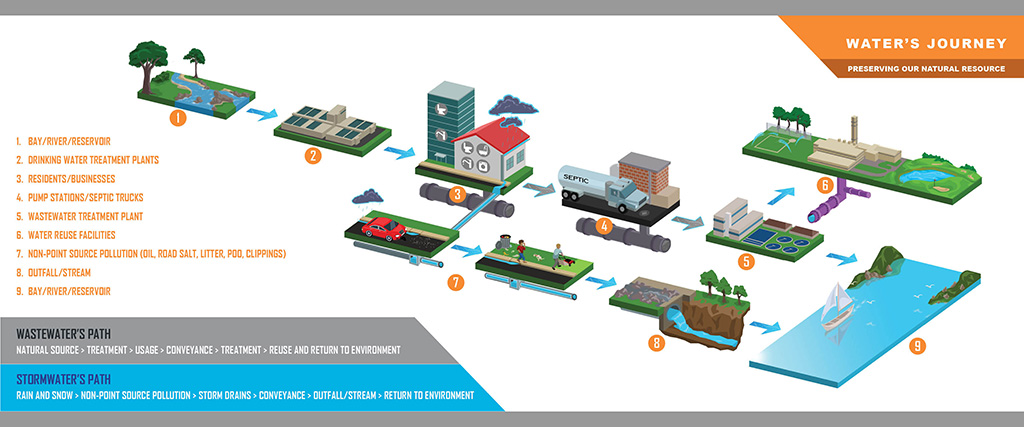You might already know that there’s a link between energy and the environment. Much of our energy (think: electricity and fuel) is supplied from fossil fuels like coal, oil, and natural gas. These energy sources release carbon dioxide into the air when burned, which contributes to climate change. According to the U.S. Environmental Protection Agency (EPA), 25 percent of U.S. greenhouse gas emissions in 2020 were linked to electricity production alone. So, when you think about saving energy at home, you may consider buying efficient light bulbs or using a programmable thermostat. These are great ideas, but are you aware of the other less obvious source of energy consumption in your home—your water?
Believe it or not, it takes a considerable amount of energy to process, treat, and heat the water that you use for drinking, cooking, cleaning, and other household uses. In fact, the U.S. Department of Energy estimates that water heating alone accounts for about 20 percent of a household’s home energy use. By being more water-conscious, you can reduce your energy consumption and, therefore, your environmental impact.
How Does Water Use Energy?
From production to end use, your water requires energy at every step. For instance, it takes energy to pump water from surface or ground water sources; treat water to make it safe to consume; heat water for our everyday uses in homes and buildings; treat wastewater to remove pollutants; and move water between all of these points.

According to EPA’s WaterSense program, the amount of energy it takes to treat and deliver water to just ten homes in one year is enough to power a home refrigerator for six years.
How Can I Save Water (and Energy) at Home?
You use water every day, but there are lots of ways to be mindful about how and how much you’re using it. When you cut back on your water or hot water use, you are taking climate action—and you could save money on your utility bills, too. Here are some simple steps you and your household can take to start saving water (and the energy associated with it):
- Run the tap wisely. Turning off the tap while you brush your teeth, shave, or lather up with soap can save you hundreds of gallons of water per month.
- Fix that pesky leak. Even a small leak can waste gallons of water in a day! Every year, the average U.S. family loses more than 10,000 gallons of water to leaks—equivalent to the water needed for about 270 loads of laundry.
- Shower efficiently. Did you know that standard showerheads use about 2.5 gallons of water per minute? Shorten your showers when you can, and don’t wait longer than necessary for the water to heat up before jumping in.
- Improve your hardware. Install water-efficient showerheads and faucets (found at most hardware stores) and other water-efficient appliances in your home. You can learn about some of the options from the EPA’s WaterSense program. Look for the WaterSense label to find products that meet the EPA’s criteria for efficiency and performance!
- Do fewer and fuller loads of laundry. Doing one less load of laundry per week by washing only full loads could save you more than 1,600 gallons of water per year. Run your dishwasher when it’s full, too—you could save 320 gallons of water annually.
- Wash your laundry on “cold.” Using cold water, or just a cooler temperature setting, for your laundry saves energy. In fact, by turning your laundry’s water temperature from 75 degrees to 60 degrees Fahrenheit, you could save $60 annually in utilities.
- Sweep your sidewalk! Clear away leaves and debris by using a broom instead of a hose on your sidewalk or driveway. This could save you 3 to 5 gallons of water per minute.
- Pay attention to your water use! If you notice that some of your habits may be using more water than necessary, think about how you could modify them to be more water—and energy—efficient.
Learn More
- To learn more about your water in Fairfax County, visit our Water’s Journey webpage. For more home energy saving ideas, check out Energy Action Fairfax.
- Want even more information about water conservation? Learn about our HomeWise program and watch our Water Conservation in Bathrooms and Outdoor Water Conservation webinars.

